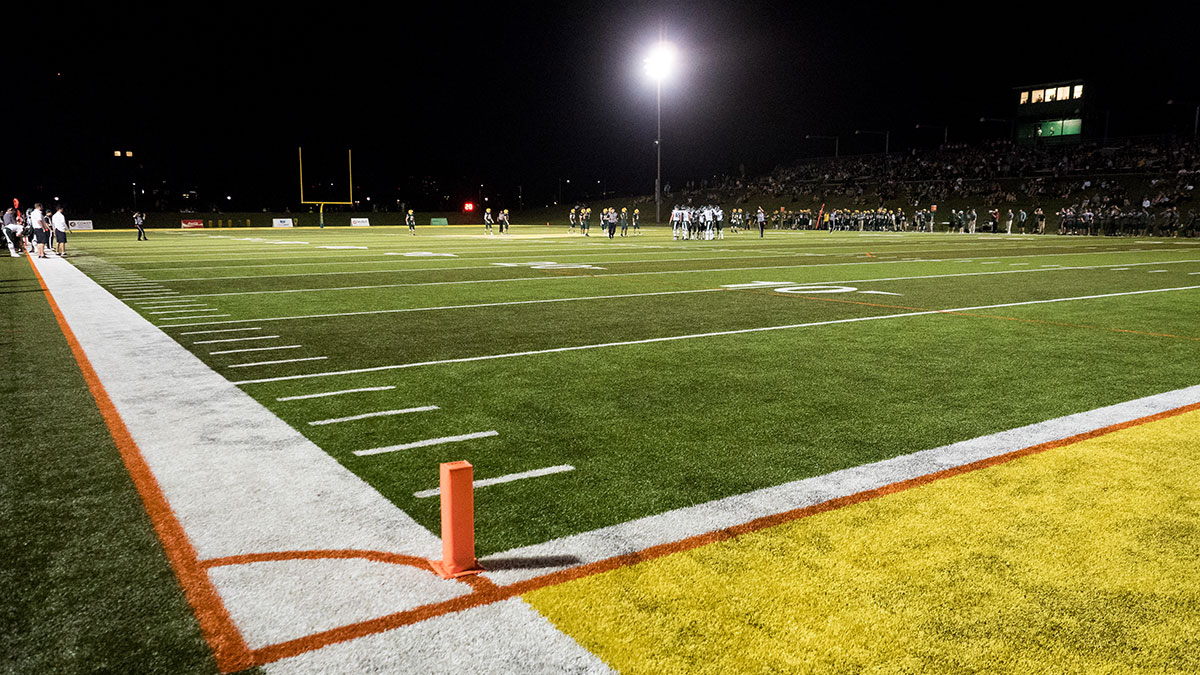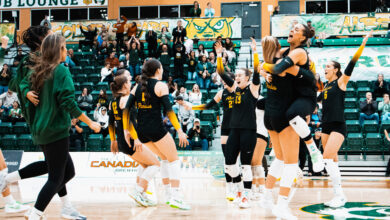Q&A: Is hazing in female sports teams on the rise?
 Ab Sch
Ab SchA study released last summer from the University of Manitoba found that cases of hazing among Canadian female varsity athletes are on the rise.
The study, co-authored by Jay Johnson a professor in the department of kinesiology at the U of M, found that despite campus initiatives to reduce hazing, the practice is still prevalent.
To get another take on the study and how hazing continues on campuses, we spoke with Stacy Lorenz, an Associate Professor in the Department of Kinesiology at the University of Alberta Augustana Campus. Lorenz specializes in the history and sociology of sport with one of his main topics of study at the moment being violence in sports.
The Gateway: Can you describe what hazing is and where it’s found?
Lorenz: It’s typically some sort of initiation ritual that usually involves the veterans testing the rookies to evaluate if they’re worthy of membership on the team by putting them through rituals that unfortunately are often meant to reinforce the status and superiority of the veteran athletes.
Often they involve excessive alcohol consumption. With the drinking, some of those things can obviously be very dangerous because when you are either forced to or want to show how much you can eat or drink, that can get out of hand.
On the more harmful and humiliating side, they often involve some sort of demeaning activity or some sort of simulated sex act or sexual violence in some cases. They sometimes involve some kind of humiliating or physical punishment. So that’s on the more extreme side. Then on the other side of things, some of the examples they talked about in that study are things like dressing up in unusual or strange clothing or having a skit night or a roast where you’re making fun of people… or somebody having to be the slave of the veteran player for a while.
Why are these behaviours continuing? Do athletes genuinely feel this will improve group dynamic or is it really just a matter of displaying that superiority?
Partly, I think it is the power of tradition within teams and groups. The idea that, “Well I didn’t like this when I went through it but now I’m in the position of power and superiority.” I would hope there’s a lot more awareness and education around some of those things and that some of the more harsh, humiliating, and abusive rituals are on their way out. But we don’t really know for sure because there’s also a culture of silence around it. And knowing that these behaviours are being more policed and criticized more frequently that’s just driven them underground. So it is difficult to get an absolute measure of how frequently that’s going on in the sport.
Now one of the problems with this study is that they had some problems with the survey they put out. They did not measure what would be called abusive, sexual, or alcohol-related initiation activities. Those results were obviously the most significant and interesting ones. So when they say close to two-thirds of the university athletes reported being involved in hazing behaviour, it was things like embarrassing clothing, public singing, skit night, or being forced to eat or drink some disgusting mixture or beverage, things like that which aren’t great but they aren’t the more harmful types of activities.
I would say that it just doesn’t give us a complete picture because the most common hazing involves alcohol consumption and they didn’t even measure that. So likely the numbers they’re using are on the lower side. That’s a little bit problematic in terms of the study but there are other studies that have shown that female athletes are increasingly involved in hazing. I think that is a concern because the thing is not just a problem of male sports teams, it’s now a problem of sports culture in general.
You mentioned some of those gender dynamics and how they implement themselves into hazing. Do you think women are trying to imitate male behaviours?
That’s really tough to untangle. The more we study stuff like this, the explanations that previously we attributed to performances in masculinity (though I think a lot of that is still going on), female athletes often exhibit many of the same behaviours. Many sociologists are now talking more about socialization into sports culture.
Another example is playing through pain and injury as part of the sports experience. That’s previously been explained as a performance of masculinity and that if you don’t play through an injury you’re “not a real man.” But now studies of female athletes show that female athletes have similar kinds of behaviours and performances of what makes someone a “real athlete.” So it’s complicated. What is something we can attribute to performances of gender and what can we attribute to sports culture?
What are some strategies or techniques universities have used in order to discourage or bring awareness to hazing?
Almost all university programs now have anti-hazing policies. They have athlete education or athlete orientation where they tell athletes that these kinds of abusive behaviours are not acceptable and will not be tolerated. Some universities or teams have gone further in trying to replace them with more positive team-building activities like maybe some sort of community service, mentoring young athletes, or some outdoor experience or physical challenge test. I think universities have made progress in eliminating the worst of these behaviours, but I do still think almost every team still has some kind of rookie party where they’re going to do this. Hopefully, they’re not as dangerous and denigrating as they were before.




